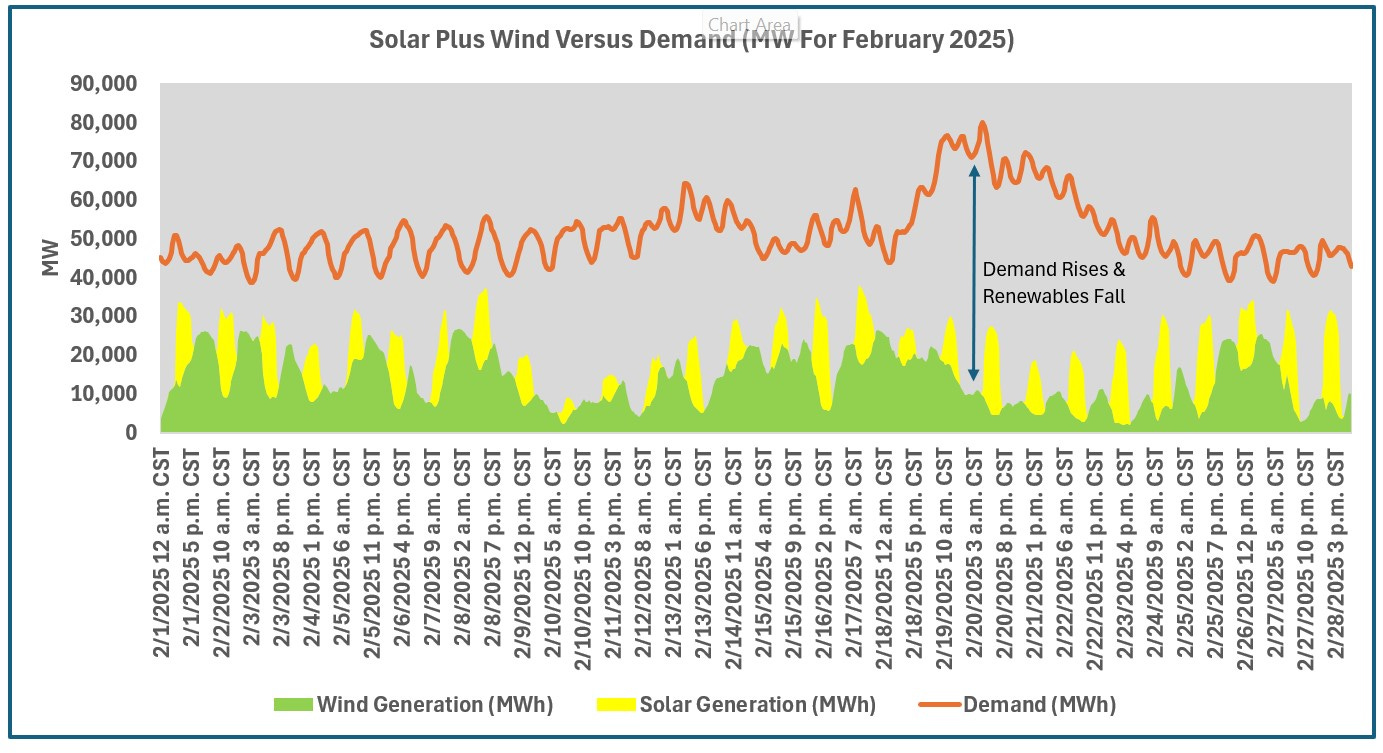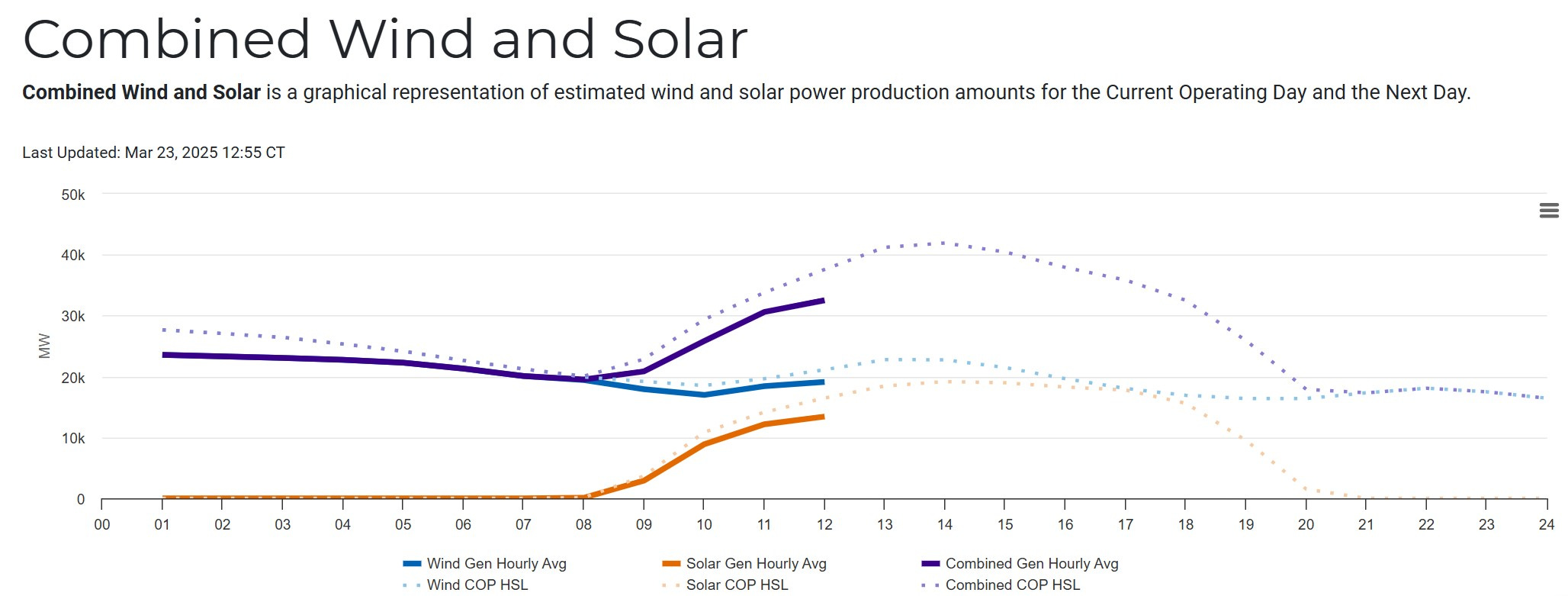Texas Natural Gas Record After Dunkelflaute
The term Dunkelflaute refers to periods of low wind and solar output, creating significant challenges for electricity generation.
Natural Gas Steps Up in Texas
Between February 19–22, a cold snap in Texas led to a surge in electricity demand. In response, natural gas-fired power generation approached record highs for both hourly and daily output, compensating for the drop in wind and solar production.
According to the U.S. Energy Information Administration (EIA), “In addition to demand surges, natural gas-fired generation rises to meet supply requirements during periods of lower wind and solar generation. In February’s cold snap, demand increased while combined wind and solar generation decreased.”
Texas: The U.S. Leader in Wind and Solar
Texas leads the nation in wind and solar generation—more than 2.5 times that of California, the second-ranked state. However, despite this dominance, both Texas and California generate approximately 29% of their total electricity from these intermittent sources. In other words, even the top two states in renewable generation still rely on other sources for about 71% of their electricity needs, demonstrating how far they remain from achieving net-zero emissions.
The Challenge of Intermittency
Grid data from February shows that wind and solar generation fluctuated significantly throughout the month, ranging from as low as 8% to as high as 73% of total electricity demand. This variability underscores the fundamental challenge of intermittent energy sources.
During the February cold snap, demand spiked just as wind generation plummeted. As a result, natural gas generation ramped up to fill the gap, reaching its second-highest level on record.
Forecasting Difficulties
Each day, ERCOT—the grid operator for Texas—forecasts wind and solar generation for the following 24 hours. However, on March 23, 2025, midday data revealed that both wind and solar output were significantly lower than expected. To compensate, ERCOT had to call on dispatchable power sources to maintain grid stability.
Conclusion
Periods of low renewable generation, such as Dunkelflaute events, highlight the need for reliable and dispatchable power sources to ensure grid stability. As intermittent energy sources expand, the overall cost of electricity rises due to the need for redundant generation capacity. Without sufficient backup power, grid reliability would be at risk whenever wind and solar generation fail to meet demand.







